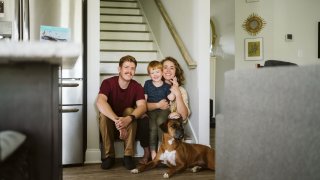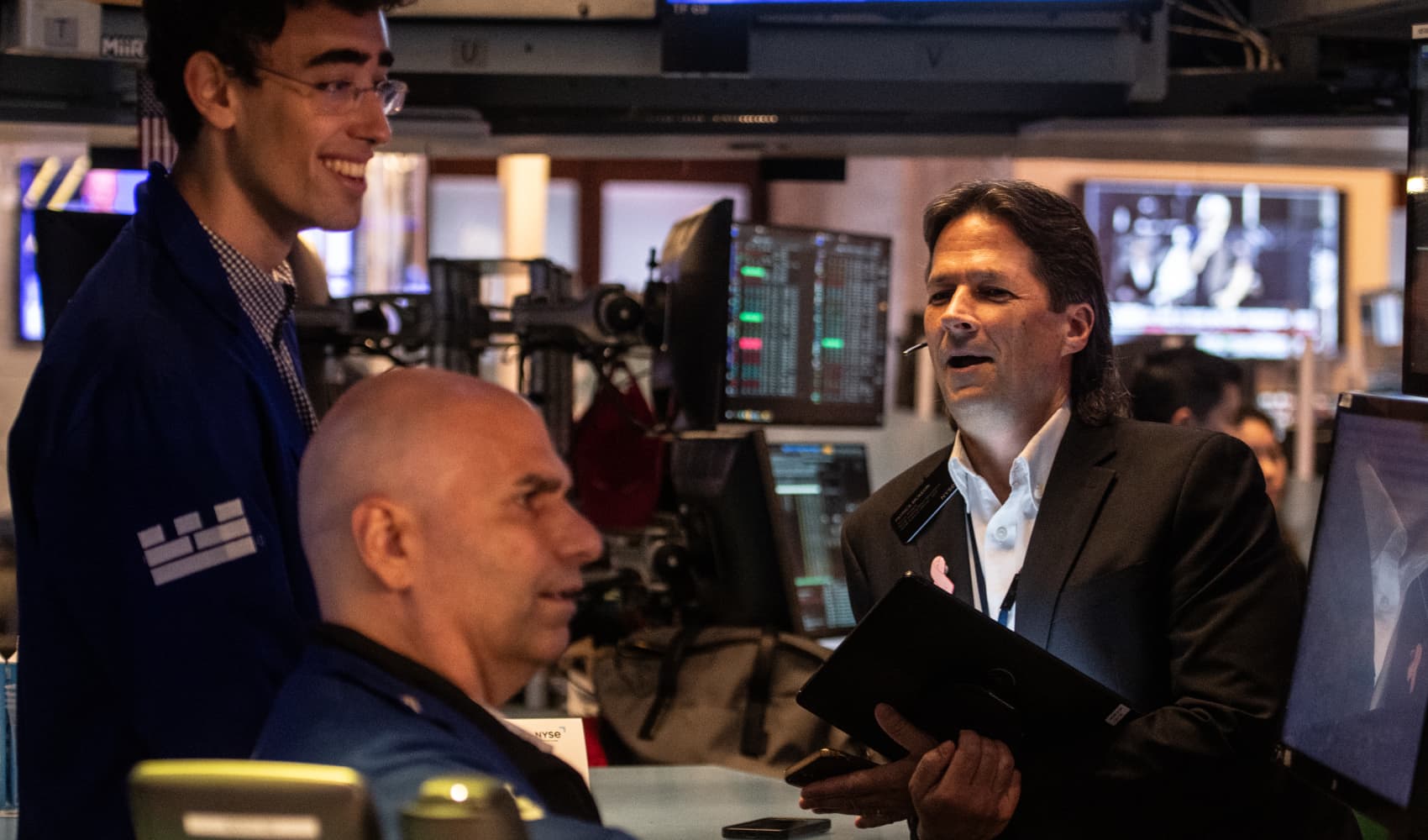
This story is part of CNBC Make It's Six-Figure Side Hustle series, where people with lucrative side hustles break down the routines and habits they've used to make money on top of their full-time jobs. Got a story to tell? Let us know! Email us at AskMakeIt@cnbc.com.
Jamie Inlow started out with an idea, no business or real estate experience, and a $2,000 gift from her neighbor.
He gave her the money to furnish the empty apartment above a barn on his Scottsville, Virginia, property, which housed Merino sheep. She listed the apartment on Airbnb in 2019, and split the profits with him.
Inlow always hoped she could grow that listing into a full-time gig, creating a corporate entity called Be Still Getaways to manage the one property.
Get top local stories in Southern California delivered to you every morning. Sign up for NBC LA's News Headlines newsletter.
But even as revenue came pouring in, she struggled to turn enough of a profit to live on, relying instead on the $50,000 per year she earned as a consultant and student program director at the University of Virginia.
By 2021, Inlow and one full-time staffer managed 30 listings, bringing in $205,000 in revenue. Much of that money went toward maintenance, repairs and adding properties to Be Still Getaways' portfolio. Inlow paid herself $10,000 that year, she says.
Profit margins were slim because the rentals were small, relatively inexpensive single-family units. By the summer of 2022, Be Still Getaways had a strong enough reputation — and a partnership with a local real estate agent — for Inlow to finally add larger, more luxurious vacation rentals to her portfolio.
Money Report
Revenue skyrocketed, enabling her to hire more people and quit her two other jobs.
Today, Be Still Getaways runs 129 properties in Virginia. It brought in $2.28 million in revenue last year on Airbnb and rental platform Eviivo, according to documents reviewed by CNBC Make It. The company added an additional $600,000 in revenue on a third platform, Hostify, Inlow estimates.
Her husband also left his teaching job to work at the company. They make a combined $150,000 from Be Still Getaways per year, Inlow says.
Here, Inlow discusses what she wishes she'd known in the beginning, the biggest difference between running a side hustle and a full-time company, and whether her success is replicable for other people.
CNBC Make It: You started a company with practically no business experience. What do you wish you'd known at the time?
Jamie Inlow: A large part of my success is my demeanor. I consider myself to be an incredibly resilient and ambitious person. It might come across as hyper-fixation, but when I decide to do something, I'm going to do it.
It's one of my favorite things about myself. I will keep trying to figure things out until they're successful. It's not easy for me to walk away from anything.
When I was managing 20 properties by myself, I made a lot of compromises in contracts. Two years ago, if someone reached out and said, "Hey, I live at this local property six months out of the year. Can you manage it the other half?" I would have said, "Yes, we'll make it work. Whatever you want, we will do it."
Those decisions felt important at the time to find and keep partners. Looking back, I don't think I needed to make those sacrifices. I think that knowledge comes from experience, and success comes from knowing what you're capable of, what your team is capable of.
I would go back and tell myself, "This is your business. There will always be other contracts. You don't have to do something if it's not the right fit."
Do you think your side hustle is replicable? If so, what do people need to start managing their own rentals?
There's a huge need for short-term rental property managers, so if you want to do it, do it. But you need to identify immediately: What's the product? Who are we going to hire? What are our standards?
Even though I started with a barn, I knew I wanted to manage boutique luxury properties. I knew we could never compromise our cleaning standards, and had to hire self-starters.
You need cash to hire lights-out staff, too. As we grew, I looked at the numbers and realized I couldn't do everything myself. I'm a mom to a young child, and I was already struggling with work-life balance.
The idea of taking on all those roles was also a tipping point for me. I invested in hiring good people and paying them before I ever paid myself.
What's surprised you the most about the difference between running a side hustle and being a full-time CEO?
I sometimes have to take a step back and remember I love this line of work.
When I was a one-man team hosting the barn, I lived for meeting our guests and hearing them gush about their experiences. But the higher you advance in your company, the further removed you are from the reaction to the product.
We have a shop at one of our motels, and sometimes I'll take a break and take my son over to check things out. I'll do small tasks, like putting drinks in the fridge or popcorn on the shelves.
When I roll up, the string lights are on and everyone's out by the firepits and I get to interact with people. Guests will say, "We love it here!" It reminds me why I do this. It fills up my cup so much.
This interview has been edited for length and clarity.
DON'T MISS: Want to be smarter and more successful with your money, work & life? Sign up for our new newsletter!
Get CNBC's free Warren Buffett Guide to Investing, which distills the billionaire's No. 1 best piece of advice for regular investors, do's and don'ts, and three key investing principles into a clear and simple guidebook.
Check out more from Six-Figure Side Hustle:
- 24-year-old barista's side hustle earns $9,000 a month, more than her full-time job—it only takes 8 hours a week
- 33-year-old with a six-figure side hustle: 'People underestimate how much it takes to be very successful'






